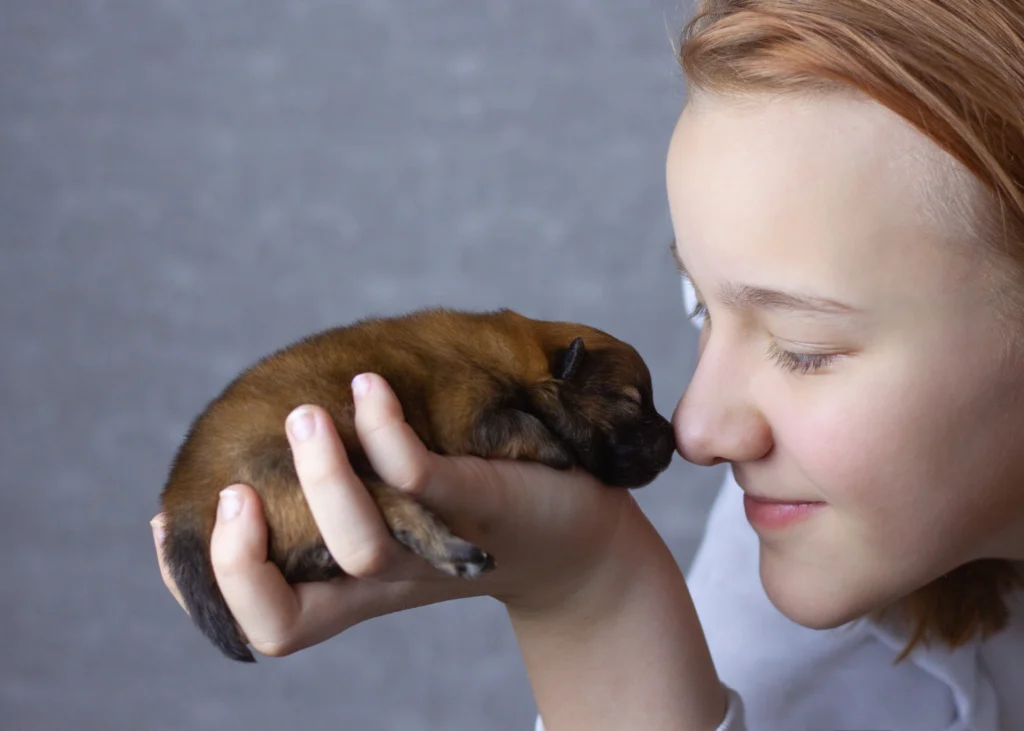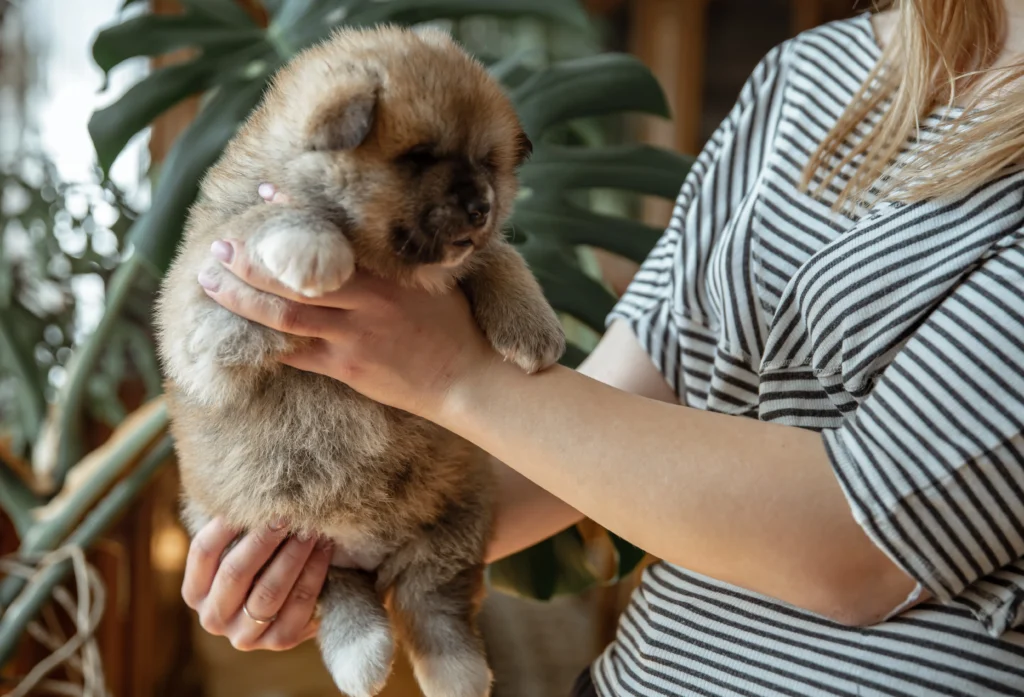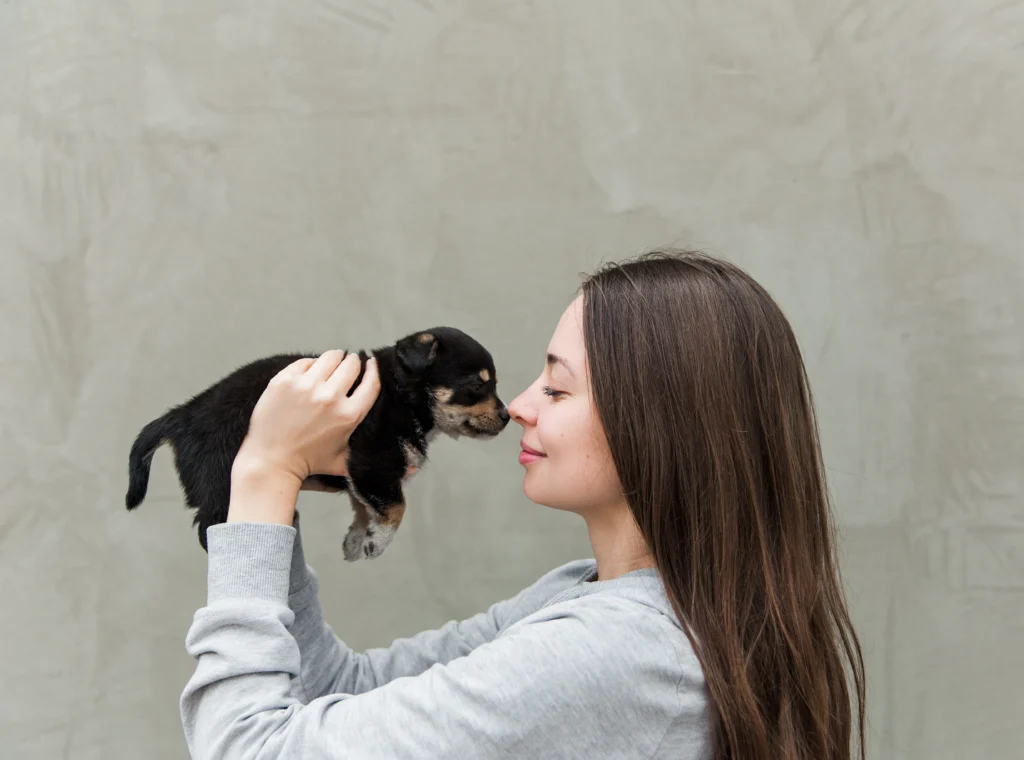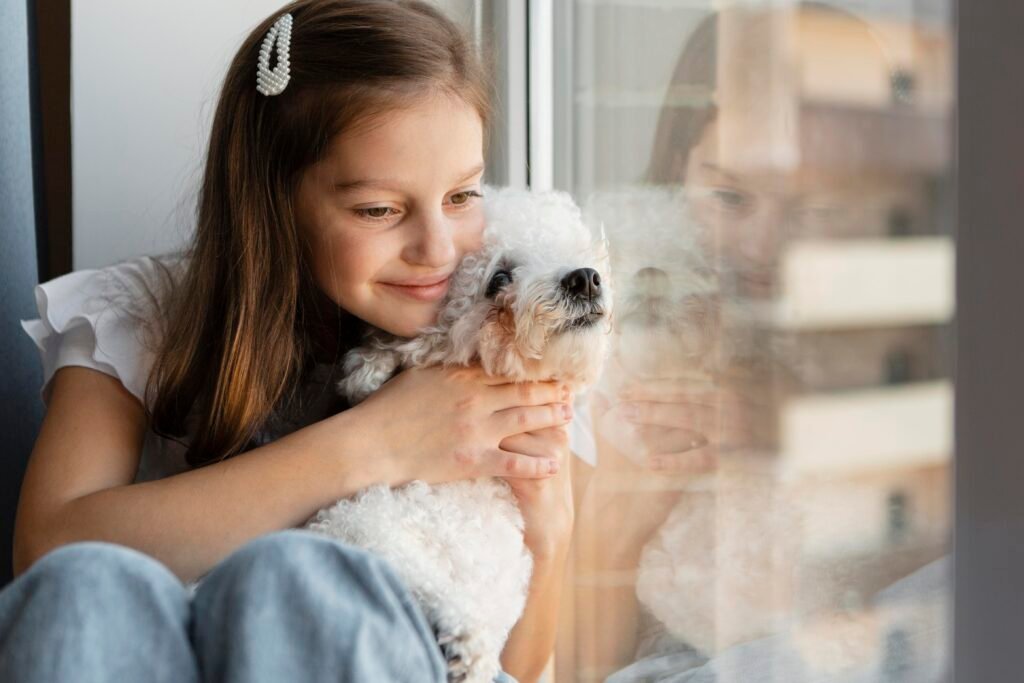Introduction
Are you considering bringing a furry friend into your home but worried about allergies? You’re not alone. Millions of Americans struggle with pet allergies yet still dream of having a canine companion. That’s where hypoallergenic puppies come in! These special breeds produce fewer allergens, making them ideal for allergy sufferers. But before you rush to adopt a hypoallergenic puppy, there are some critical mistakes you need to avoid.
Many prospective pet parents make significant errors during the adoption process that can lead to heartache, financial strain, and even having to return their new furry family member. In this comprehensive guide, we’ll explore the six most shocking mistakes people make when looking to adopt hypoallergenic dogs and how you can avoid them.
Whether you’re searching for small hypoallergenic dogs for adoption or larger non-shedding puppies for adoption, this article will help you navigate the process successfully. From understanding what “hypoallergenic” really means to finding reputable sources where to adopt hypoallergenic puppies, we’ve got you covered.
Let’s dive into the world of hypoallergenic puppy adoption and make sure your journey to finding the perfect low-allergy companion is smooth and successful!

Understanding Hypoallergenic Dogs: What Does It Really Mean?
Before we discuss the mistakes to avoid when you adopt a hypoallergenic dog, it’s essential to understand what “hypoallergenic” actually means in the context of our furry friends.
The Truth About Hypoallergenic Puppies for Adoption
Contrary to popular belief, no dog is 100% hypoallergenic. When people search for “hypoallergenic puppies for adoption,” they’re looking for breeds that produce fewer allergens than others. The primary allergen dogs produce is a protein called Can f 1, found in their dander, saliva, and urine – not actually their fur!
However, breeds considered hypoallergenic typically:
- Shed less fur (which can carry allergens)
- Produce less dander
- Have hair instead of fur (which traps fewer allergens)
When you adopt a hypoallergenic dog, you’re choosing a breed that’s less likely to trigger allergic reactions, but individual responses can vary. Some of the best hypoallergenic dogs to adopt include Poodles, Bichon Frises, and Portuguese Water Dogs, though there are many wonderful hypoallergenic dog breeds for adoption.
Mistake #1: Believing the “Completely Allergen-Free” Myth
The first shocking mistake many make when looking to adopt non-shedding puppies for adoption is believing they’ll find a completely allergen-free dog. This misconception can lead to disappointment and even rehoming situations when allergies still flare.
The Reality Check

When you decide to adopt a hypoallergenic puppy, understand that you’re choosing a dog that may produce fewer allergens, not zero allergens. Dr. Clifford Bassett, Medical Director of Allergy and Asthma Care of New York, explains: “Even hairless breeds produce some level of allergens through their skin cells and saliva” (American Academy of Allergy, Asthma & Immunology).
How to Avoid This Mistake:
- Spend time with the breed before adoption: Before you commit to adopt a non-shedding dog, arrange to spend several hours with that specific breed to see how your allergies react.
- Consider allergy testing: Consult with an allergist to determine the severity of your pet allergies and whether certain breeds might be better suited for your specific allergies.
- Implement allergy management strategies: Even with hypoallergenic dog breeds for adoption, you may need to use air purifiers, regular bathing schedules, and designated pet-free zones in your home.
Many hypoallergenic dog rescue organizations allow potential adopters to foster before finalizing adoption, which is perfect for testing allergy compatibility.
Mistake #2: Falling for Online Scams When Searching for “Free Hypoallergenic Puppies”
The internet is filled with too-good-to-be-true offers for free hypoallergenic puppies or hypoallergenic puppies for adoption at suspiciously low prices. This is perhaps the most financially and emotionally devastating mistake prospective pet parents make.
The Red Flags to Watch For
Scammers know that hypoallergenic puppies for adoption are in high demand, especially small hypoallergenic dogs for adoption. They create convincing websites or social media posts offering rare breeds at bargain prices or even free hypoallergenic puppies.
According to the Better Business Bureau, online pet scams have increased by over 300% in recent years, with victims losing an average of $700 each.
How to Avoid This Mistake:
- Research typical pricing: Know the general price range for the hypoallergenic dog breeds for adoption you’re interested in. If a deal seems too good to be true, it probably is.
- Verify legitimacy: When looking at hypoallergenic dogs available for adoption online, verify the organization through independent reviews, the BBB, or local veterinary referrals.
- Use reputable sources: Stick to well-known organizations when searching where to adopt hypoallergenic puppies, such as:
- American Kennel Club Marketplace
- Petfinder
- Adopt-a-Pet
- Your local breed-specific hypoallergenic dog rescue groups
- Always meet in person: Never send money before meeting the puppy and the breeder/rescue organization in person.
At PetsMemes, we’ve previously covered how to identify responsible breeders versus puppy mills, which can help you avoid these heartbreaking scams.
Mistake #3: Not Researching the Specific Needs of Different Hypoallergenic Breeds

Many people get so focused on finding low allergy puppies for adoption that they forget to research the specific temperament, exercise needs, and care requirements of different hypoallergenic breeds.
The Breed Mismatch Problem
Each of the best hypoallergenic dogs to adopt has distinct personality traits and needs. For example:
- Poodles: Highly intelligent and active, requiring mental stimulation and regular exercise
- Maltese: Affectionate lap dogs needing consistent grooming
- Schnauzers: Alert, energetic dogs with strong personalities
- Bichon Frises: Playful and social, requiring regular professional grooming
- Yorkshire Terriers: Small but confident dogs with big personalities
Adopting a breed whose needs don’t match your lifestyle can lead to behavioral issues or even surrender to rescue organizations. According to the ASPCA, about 47% of dogs surrendered to shelters are given up due to lifestyle mismatches.
How to Avoid This Mistake:
- Research thoroughly: Before you adopt non shedding puppies for adoption, research multiple breeds that match your allergy needs AND your lifestyle.
- Consider energy levels: Be honest about your activity level and choose a hypoallergenic puppy with compatible energy.
- Factor in grooming needs: Many hypoallergenic dog breeds for adoption require significant grooming. Budget for professional grooming every 4-8 weeks, which can cost $50-100 per session.
- Space requirements: While many small hypoallergenic dogs for adoption can thrive in apartments, others need yard space to run and play.
For more detailed information on specific breeds’ needs, our article on hypoallergenic breed characteristics can help you make an informed decision when you adopt a hypoallergenic dog.
Mistake #4: Overlooking Rescue Organizations When Searching Where to Adopt Hypoallergenic Puppies

Many people assume that hypoallergenic dogs available for adoption can only be found through breeders, overlooking the wonderful hypoallergenic dog rescue organizations across the United States.
The Rescue Advantage
When you adopt a non-allergenic dog through a rescue, you’re not only giving a deserving pet a second chance, but you often:
- Pay significantly less than breeder prices
- Receive a dog that’s already spayed/neutered and vaccinated
- Get more accurate information about the dog’s temperament and behavior
- Support organizations working to end pet homelessness
According to PetFinder, approximately 25% of dogs in rescues are purebred, including many hypoallergenic breeds.
How to Avoid This Mistake:
- Search breed-specific rescues: Many hypoallergenic breeds have dedicated rescue organizations. Search terms like “Poodle rescue” or “hypoallergenic dog rescue near me” to find them.
- Set up alerts: Create alerts on adoption websites for specific hypoallergenic dog breeds for adoption you’re interested in.
- Consider adult dogs: While many focus on finding hypoallergenic puppy adoption options, adult dogs often have established personalities, basic training, and lower energy levels that might better suit your lifestyle.
- Be patient: Finding specific low allergy puppies for adoption through rescues may take time, but the wait is worthwhile.
Some excellent resources for finding rescue hypoallergenic dogs include:
Our guide on adopting rescue pets provides additional tips for navigating the rescue adoption process.
Mistake #5: Not Verifying the Health Testing of Hypoallergenic Puppies for Adoption

Whether going through a breeder or rescue, one shocking mistake is failing to verify health testing for hypoallergenic puppies for adoption. These breeds often have predispositions to specific health issues that responsible sources will test for.
The Health Testing Imperative
According to the Orthopedic Foundation for Animals, many popular hypoallergenic breeds have breed-specific health concerns:
- Poodles: Hip dysplasia, progressive retinal atrophy, and von Willebrand’s disease
- Bichons: Patellar luxation, bladder stones, and allergies
- Yorkshire Terriers: Liver shunts, patellar luxation, and tracheal collapse
- Portuguese Water Dogs: Hip dysplasia and storage diseases
Failing to adopt from sources that conduct proper health testing can lead to heartbreak and thousands in veterinary bills.
How to Avoid This Mistake:
- Ask for health testing documentation: When you adopt hypoallergenic dog breeds for adoption, request documentation of breed-appropriate health screenings.
- Verify OFA certifications: For purebred hypoallergenic puppies, verify parents’ health certifications through the Orthopedic Foundation for Animals database.
- Get a veterinary check: Have any hypoallergenic dogs available for adoption examined by your veterinarian before finalizing the adoption.
- Consider pet insurance: Even the healthiest hypoallergenic dog breeds for adoption may develop issues later. Budget for pet insurance, which costs approximately $30-60 monthly.
At PetsMemes, we’ve covered pet health insurance options that can help protect your new family member and your wallet.
Mistake #6: Not Preparing Your Home Before You Adopt a Hypoallergenic Puppy
The final shocking mistake many make is failing to properly prepare their home before bringing home their new hypoallergenic puppy. This lack of preparation can lead to safety issues, property damage, and a stressful transition for both you and your new pet.
The Preparation Checklist
Before you adopt a non shedding dog, you need to:
- Puppy-proof your home: Remove hazards, secure cords, and protect valuable items
- Set up allergy management systems: Install HEPA filters and create cleaning routines
- Purchase essential supplies: Crates, beds, food, toys, grooming tools
- Establish house rules: Decide on furniture access, sleeping arrangements, and training methods
- Schedule initial veterinary care: Book first checkups and establish a relationship with a vet
According to the American Veterinary Medical Association, having these systems in place before adoption significantly increases the success of the human-animal bond.
How to Avoid This Mistake:
- Create a budget: Beyond the adoption fee for hypoallergenic puppies for adoption, budget for:
- Initial supplies: $200-500
- First-year veterinary care: $700-1,500
- Grooming: $600-1,200 annually
- Food: $300-700 annually
- Training: $500-1,000
- Set up support systems: Identify pet sitters, walkers, and boarding options before you adopt a hypoallergenic dog.
- Research trainers: Find trainers experienced with your chosen breed before bringing your puppy home.
- Establish a routine: Plan how the puppy’s schedule will fit into your daily life, including feeding, walking, and training times.
Our comprehensive guide to preparing your home for a new puppy provides a detailed checklist to ensure you’re fully ready.
Where to Adopt Hypoallergenic Puppies: Finding Your Perfect Match

Now that you know the mistakes to avoid, let’s explore the best places to find hypoallergenic puppies for adoption.
Rescue Organizations
Contrary to popular belief, rescue hypoallergenic dogs are available if you know where to look. Benefits include:
- Lower adoption fees than breeders ($150-450)
- Already spayed/neutered and vaccinated
- Support throughout the adoption process
Search “hypoallergenic dog rescue near me” or check these national resources:
Breed-Specific Rescues
For those seeking specific hypoallergenic dog breeds for adoption, breed-specific rescues offer:
- Expertise in that particular breed
- Thorough temperament assessment
- Ongoing support network
Popular hypoallergenic breed rescues include:
Reputable Breeders
If rescue isn’t an option and you’re looking specifically for hypoallergenic puppy adoption, responsible breeders:
- Perform health testing on parent dogs
- Provide health guarantees
- Allow you to meet the parents and see the living conditions
- Support you throughout your dog’s life
The American Kennel Club Marketplace can help you find breeders who adhere to ethical breeding practices.
Local Shelters
Don’t overlook your local animal shelters when searching for small hypoallergenic dogs for adoption. Create relationships with shelter staff and let them know you’re interested in hypoallergenic breeds.
At PetsMemes, we’ve compiled a directory of shelters that occasionally have hypoallergenic puppies for adoption.
Best Hypoallergenic Dogs to Adopt: Finding Your Perfect Match
When considering which hypoallergenic puppies for adoption might suit your lifestyle, it’s important to look beyond just their allergen production. Here’s a quick guide to some of the best hypoallergenic dogs to adopt:
For Active Families
- Standard Poodle: Intelligent, athletic, and excellent with children
- Portuguese Water Dog: Energetic, trainable working dogs who love water
- Wheaten Terrier: Friendly, sturdy medium-sized dogs with playful attitudes
For Apartment Dwellers Seeking Small Hypoallergenic Dogs for Adoption
- Maltese: Gentle lapdogs weighing under 7 pounds
- Havanese: Playful, social 7-13 pound companions
- Miniature Schnauzer: Alert, spunky dogs around 15 pounds
For First-Time Dog Owners
- Bichon Frise: Cheerful, adaptable dogs with moderate exercise needs
- Shih Tzu: Affectionate, low-energy companion dogs
- Coton de Tulear: Gentle, adaptable dogs with minimal training challenges
For Experienced Dog Owners
- Airedale Terrier: Independent, intelligent dogs requiring consistent training
- Kerry Blue Terrier: Working dogs with strong personalities
- Bedlington Terrier: Spirited dogs with unique lamb-like appearance
Remember that individual temperament can vary widely within breeds, especially when you adopt hypoallergenic dog breeds for adoption from rescues, where mixed heritage may be present.
The Cost of Adopting a Hypoallergenic Puppy
One often-overlooked aspect of adopting hypoallergenic puppies for adoption is the cost. While the idea of finding free hypoallergenic puppies is appealing, it’s rarely realistic from reputable sources.
Typical Cost Breakdown
- Rescue organizations: $150-450 adoption fee for hypoallergenic dogs available for adoption
- Shelters: $75-350 adoption fee, though finding specific hypoallergenic breeds is less common
- Reputable breeders: $1,000-3,500+ depending on breed, lineage, and region
Beyond the Adoption Fee
When you adopt a hypoallergenic puppy, budget for:
- Initial veterinary care: $200-500
- Spay/neuter (if not included): $200-500
- Training classes: $100-300
- Supplies: $200-500
- Grooming equipment: $100-300
- Professional grooming: $50-100 every 4-8 weeks
- Food: $30-60 monthly
The True Cost of “Free”
Be extremely cautious of ads for “free hypoallergenic puppies.” These often lead to:
- Scams where deposits are collected for puppies that don’t exist
- Puppy mill situations with unhealthy animals
- Dogs with undisclosed health or behavioral issues
According to the American Pet Products Association, the first-year cost of dog ownership averages $1,400-2,000, with hypoallergenic breeds often at the higher end due to grooming needs.
Preparing Your Home for Low Allergy Puppies for Adoption
Once you’ve selected where to adopt hypoallergenic puppies and chosen your breed, it’s time to prepare your home both for a puppy and for minimizing allergens.
Allergy Management Setup
- Install HEPA air purifiers in main living areas and bedrooms
- Consider removing carpeting or add low-pile, easily cleaned options
- Purchase a vacuum specifically designed for pet hair and dander
- Designate allergy-free zones (like bedrooms) where the dog won’t go
- Stock up on allergen-reducing pet wipes and shampoos
Puppy-Proofing Checklist
When preparing to adopt non shedding puppies for adoption:
- Secure electrical cords and blind cords
- Remove toxic plants (see ASPCA’s toxic plant list)
- Install baby gates for area restriction
- Store chemicals and medications out of reach
- Secure trash cans with locking lids
- Remove small choking hazards from floors and low surfaces
Essential Supplies
Before your hypoallergenic puppy adoption day, gather:
- Crate appropriate for adult size of your chosen breed
- Appropriate food (consult your vet or rescue for recommendations)
- Food and water bowls (stainless steel harbors fewer bacteria)
- Comfortable bed with washable cover
- Appropriate toys for teething and mental stimulation
- Collar, ID tag, and leash
- Grooming supplies specific to your breed
Our detailed new puppy supply checklist at PetsMemes covers everything you’ll need.
Conclusion: Making a Successful Hypoallergenic Puppy Adoption
Adopting hypoallergenic puppies for adoption can bring joy and companionship without the sneezing and wheezing that comes with many traditional breeds. By avoiding these six shocking mistakes, you’ll be well on your way to a successful adoption experience:
- Don’t believe the “completely allergen-free” myth
- Beware of online scams offering free hypoallergenic puppies
- Research specific breed needs before you adopt a hypoallergenic dog
- Don’t overlook hypoallergenic dog rescue organizations
- Verify health testing for any hypoallergenic puppies for adoption
- Prepare your home thoroughly before adoption day
Remember that adopting a dog is a 10-15 year commitment. Whether you choose to adopt hypoallergenic dog breeds for adoption through rescue or from a reputable breeder, take your time to find the perfect match for your lifestyle, living situation, and specific allergies.
For more information on hypoallergenic breeds, adoption resources, and preparing for your new furry family member, explore our other articles at PetsMemes:
- Complete Guide to Dog Allergies
- Grooming Requirements for Non-Shedding Breeds
- Training Tips for Your New Puppy
Have you already adopted a hypoallergenic puppy? We’d love to hear about your experience in the comments below!
FAQs About Hypoallergenic Puppy Adoption
Are there truly free hypoallergenic puppies available?
While finding completely free hypoallergenic puppies is rare, adoption fees at rescues and shelters are significantly lower than breeder prices and typically include veterinary care, spaying/neutering, and vaccinations.
Where can I find hypoallergenic puppy adoption near me?
Search platforms like Petfinder.com or Adoptapet.com using your zip code and filtering for hypoallergenic breeds. Also search for “[breed name] rescue” in your state or region.
Which are the best hypoallergenic dogs to adopt for first-time owners?
Bichon Frises, Maltese, and Shih Tzus are excellent low allergy puppies for adoption for first-time owners due to their manageable size and typically friendly, adaptable temperaments.
How can I tell if a rescue dog is truly hypoallergenic?
While no dog is 100% hypoallergenic, rescue organizations can often identify hypoallergenic dog breeds for adoption based on visual characteristics. For mixed breeds, spending time with the dog before adoption is essential to test your allergic reaction.
What questions should I ask when looking at hypoallergenic dogs available for adoption?
Ask about the dog’s history, temperament, energy level, health issues, grooming needs, and why they’re being rehomed. For puppies, ask about the parents’ health testing and temperament.
How much grooming do hypoallergenic dogs require?
Most hypoallergenic breeds require professional grooming every 4-8 weeks and home brushing several times weekly. This regular grooming helps minimize allergens and prevents painful matting.
Can I adopt non shedding dogs if I have children?
Yes! Many hypoallergenic breeds like Poodles, Bichons, and Portuguese Water Dogs are excellent with children. Always research the specific breed’s temperament and meet the individual dog when possible.
What’s the best age to adopt a hypoallergenic puppy?
While many prefer 8-12 week old puppies, adopting an adult hypoallergenic dog rescue has advantages: established personality, often house-trained, and typically calmer energy levels.





Leave a Comment